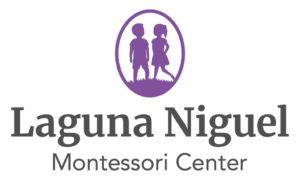How the Montessori Method Works
- The Montessori Method has been has been used with great success around the world for more than 100 years.
- Between the ages of 2 and 6, a great deal of your child’s intelligence and social characteristics are formed. The Montessori curriculum includes multi-sensorial activities that develop cognitive skills during this critical time.
- The teacher’s role is to give personal attention. She will not interfere with a child’s exploration, but will be readily available if help is required.
- The Montessori Method develops the whole personality of the child, not merely his or her intellect.
- Each child is taught and assessed individually.
- The child’s natural development of language is utilized in the process of learning to read.
- The child has the unique opportunity to fulfill his potential.
- Habits and skills developed in a Montessori classroom are useful throughout life.
- Montessori children are self-directed, self-motivated and self-disciplined.
- The Montessori classroom is joyous place where children begin to realize their potential.
Exercises and activities:
Practical Life
A child is naturally attracted to activities that give him or her independence. Children seek autonomy and control of their lives. Practice with pouring, carrying, serving, tying, sweeping and washing are a few examples of exercises that help the child to coordinate his movement and establish order and good working habits. Practical life exercises also help develop a longer attention span, deeper concentration and precision. Because lessons are presented in a left to right and top to bottom manner, they are an indirect preparation for reading.
Language
The language activities are designed to develop the child’s ability to communicate through spoken language, to explore the sound/symbol relationship and to express self through written work. Skills gained in practical life and sensorial work help prepare the child for reading and writing. Language is taught phonetically and multi- sensorially – with visual, auditory and kinesthetic activities. Word building and preliminary reading takes place through a natural progression that reflects an individual child’sreadiness and own pace.
Sensorial
The sensorial materials help the child to develop order and clarity in thinking. They include activities to aid the child to classify, discriminate, compare and contrast size, weight, shape, texture, color, taste, sound and smell. Many sensorial materials are mathematically based and provide opportunities for movement and intellectual challenges. Additionally, they introduce a rich vocabulary to the children.
Science/ Geography
These activities are designed to help the child become aware of and appreciate the diversity of the world. By examining the human, plant and animal world, the child gains exposure to the life that surrounds him or her. The child is taught a respect for taking care of his or her environment. Continent and county studies introduce the child to people, geography, music, food and art.
Mathematics
Hands on mathematic materials include exercises in quantity, symbols, place value and relationships between quantities. Because the work progresses from concrete to abstract using manipulative materials, children easily grasp mathematical concepts in addition, subtraction, multiplication, division, and fractions. The exercises not only teach the child to calculate, but they provide a deep understanding of how numbers function.

